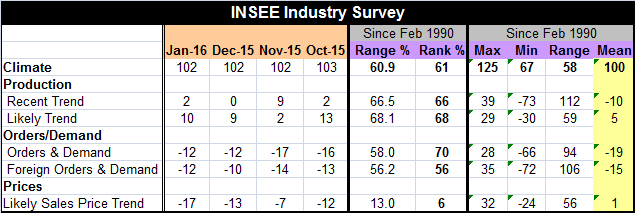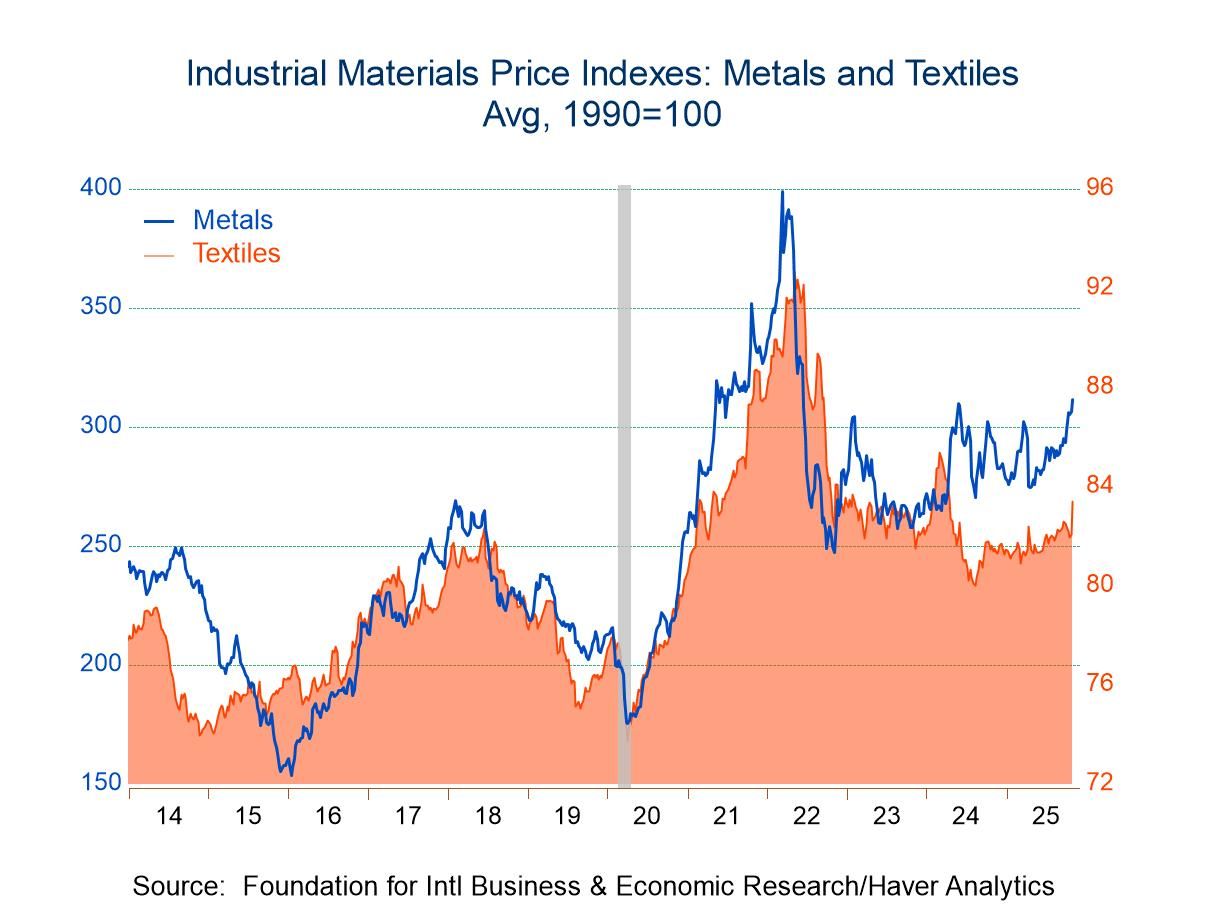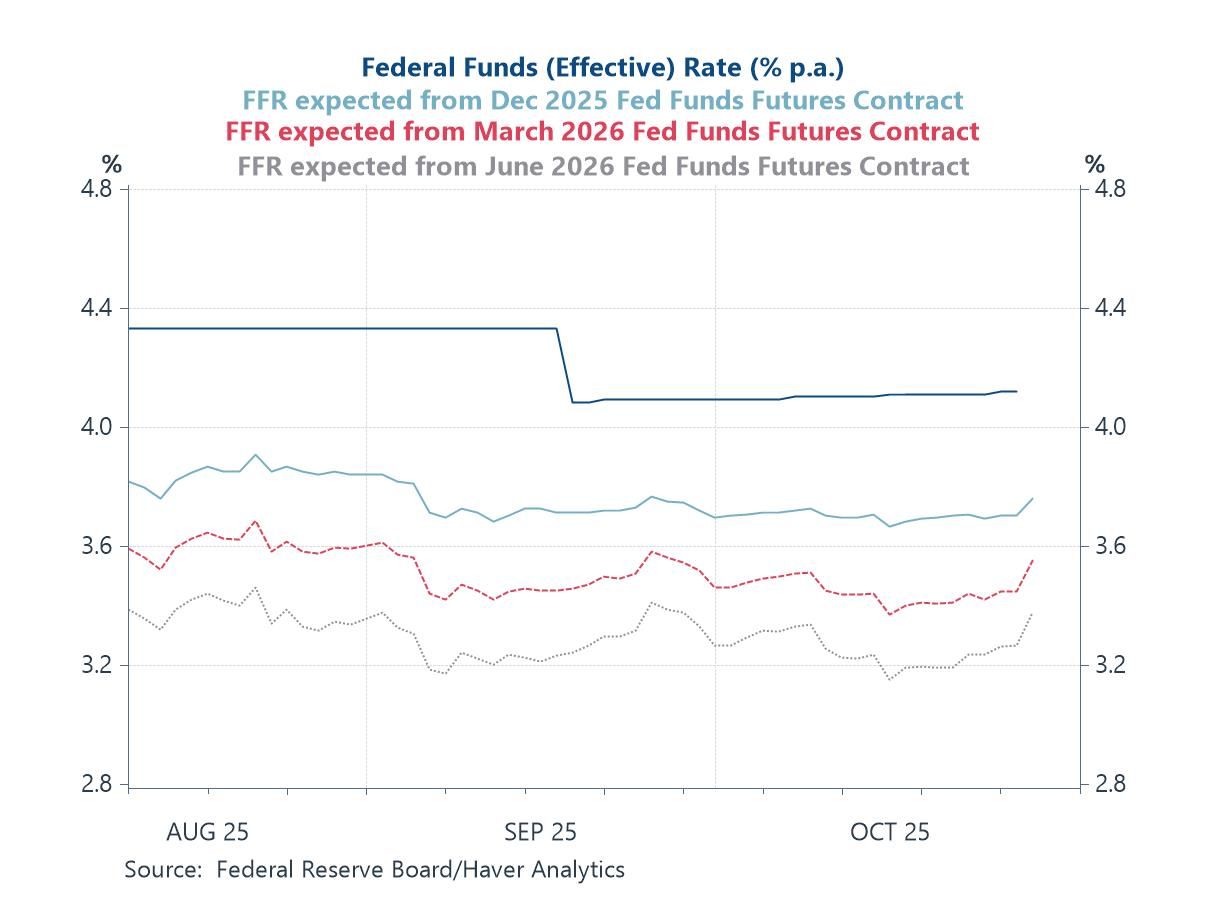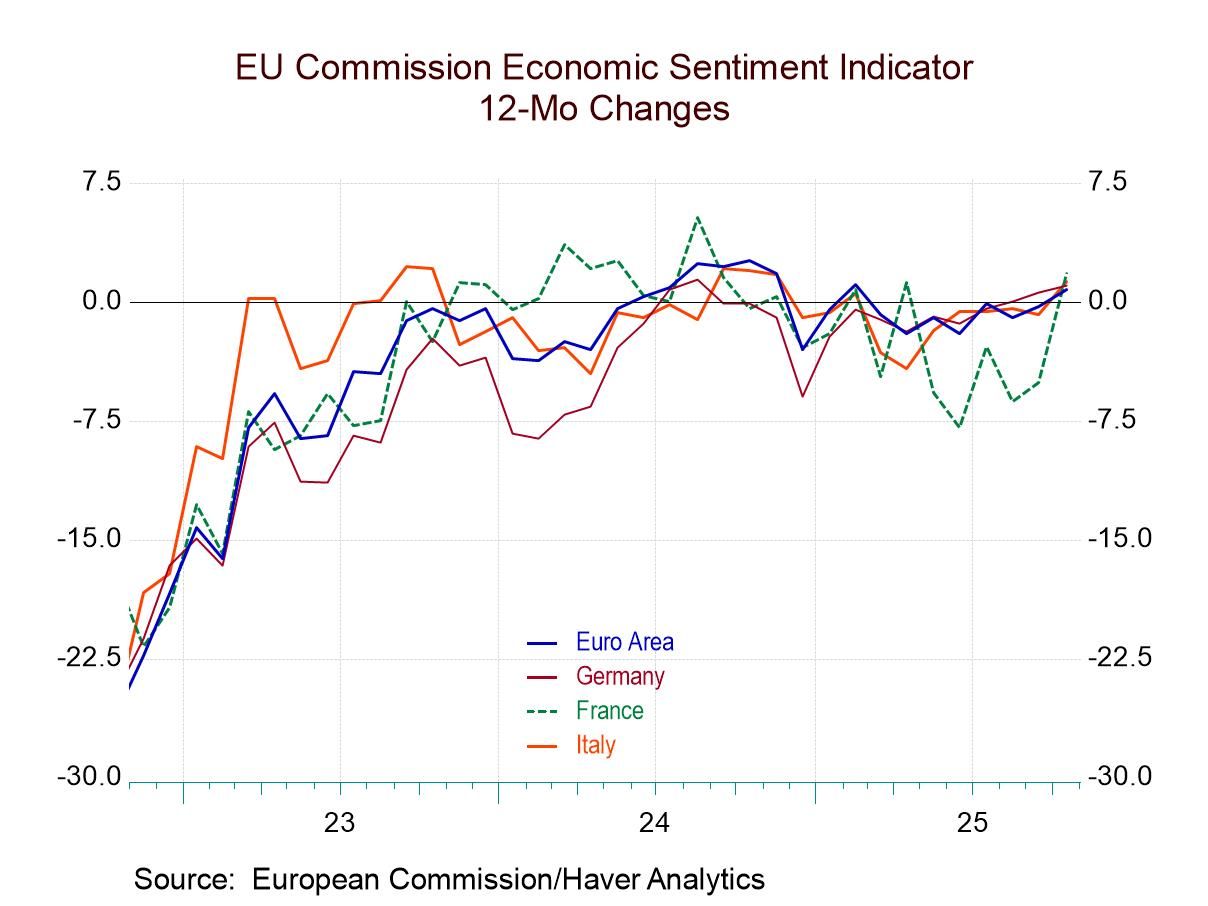 Global| Jan 21 2016
Global| Jan 21 2016French Business Indicator Is Flat in January
Summary
France's INSEE business indicator is stuck at a reading of 102 in January for the third month running. These values represent a tick lower than the October reading of 103. At 102, the indicator sits in the 61st percentile of its [...]
 France's INSEE business indicator is stuck at a reading of 102 in January for the third month running. These values represent a tick lower than the October reading of 103. At 102, the indicator sits in the 61st percentile of its ranked historic values, a moderate standing.
France's INSEE business indicator is stuck at a reading of 102 in January for the third month running. These values represent a tick lower than the October reading of 103. At 102, the indicator sits in the 61st percentile of its ranked historic values, a moderate standing.
The recent trend for production popped up to 2 in January after being flat in December. That value put the indicator in the 66th percentile of its historic rank of values. The likely trend for production also advanced to 10 in January from 9 in December. The 10 reading represents a 68th percentile standing in the historic rank of data.
Orders and demand continued at a -12 reading for the second consecutive month. This pair of readings is an improvement from their October and November readings. Despite the weakness, the -12 reading has a 70th percentile standing in its historic rank of data. What this tells us is that the French orders data tend to be weak and that makes this month's result look less weak in relative terms. The readings for foreign orders and demand are highly similar but show deterioration in January to a reading of -12 from -10 in December. Still, the -12 reading is less weak than the readings from October and November. The -12 reading for foreign orders has a decidedly middling 56th percentile rank standing.
Prices continue to show weakness. The price reading for January fell sharply to -17 from -13 in December and -7 in November. Price conditions continue to weaken as global oil and commodities prices are collapsing. The January reading sits in its sixth percentile historically. It has been weaker only 6% of the time.
The INSEE profile for business is weak. The companion report on manufacturing shows sporadically weaker percentile standings for its metrics also led by an extremely weak price reading in January. However, the manufacturing recent trend has only a 31st percentile standing, but the likely trend has a more optimistic 65th percentile standing.
As having been the case for some time, the services sector is what is holding things together in France. But the services sector is still no picnic ground for growth. The INSEE services sector climate indicator has only a 54th percentile standing. The observed sales result has been higher fully 54% of the time while the expected sales result for the next three months has a 52nd percentile standing. The services readings are only of middling quality here. Service price trends are weak with the expected trend having slipped to the lower 9th percentile of its historic rank, a troublingly weak reading. The real strength we see in services is from its provision of employment where observed employment trends have been better only 3% of the time historically and expected employment over the next three months still has a very strong 91st percentile standing. The internal dynamics for services may still be middling and manufacturing maybe weak, but service sector employment is rock solid and that is the glue holding the French economy together.

Robert Brusca
AuthorMore in Author Profile »Robert A. Brusca is Chief Economist of Fact and Opinion Economics, a consulting firm he founded in Manhattan. He has been an economist on Wall Street for over 25 years. He has visited central banking and large institutional clients in over 30 countries in his career as an economist. Mr. Brusca was a Divisional Research Chief at the Federal Reserve Bank of NY (Chief of the International Financial markets Division), a Fed Watcher at Irving Trust and Chief Economist at Nikko Securities International. He is widely quoted and appears in various media. Mr. Brusca holds an MA and Ph.D. in economics from Michigan State University and a BA in Economics from the University of Michigan. His research pursues his strong interests in non aligned policy economics as well as international economics. FAO Economics’ research targets investors to assist them in making better investment decisions in stocks, bonds and in a variety of international assets. The company does not manage money and has no conflicts in giving economic advice.






